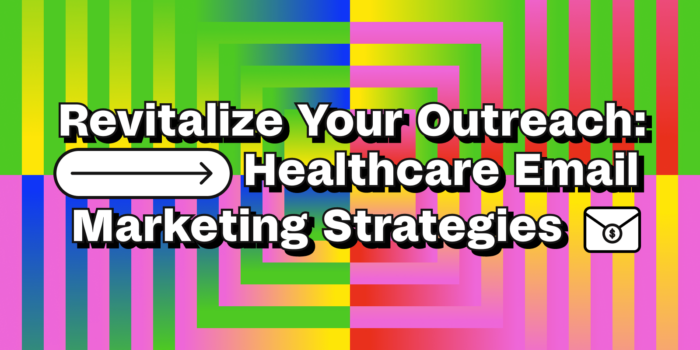The consumerization of healthcare has pushed companies to find innovative ways to capture the customers’ attention as traditional healthcare marketing is now very limited in its capabilities. Performance marketing is a strategic approach connecting customers with companies and fostering a measurable way to assess performance while delivering a tailored marketing approach to each customer, to meet their needs and expectations.
What is Performance Marketing?
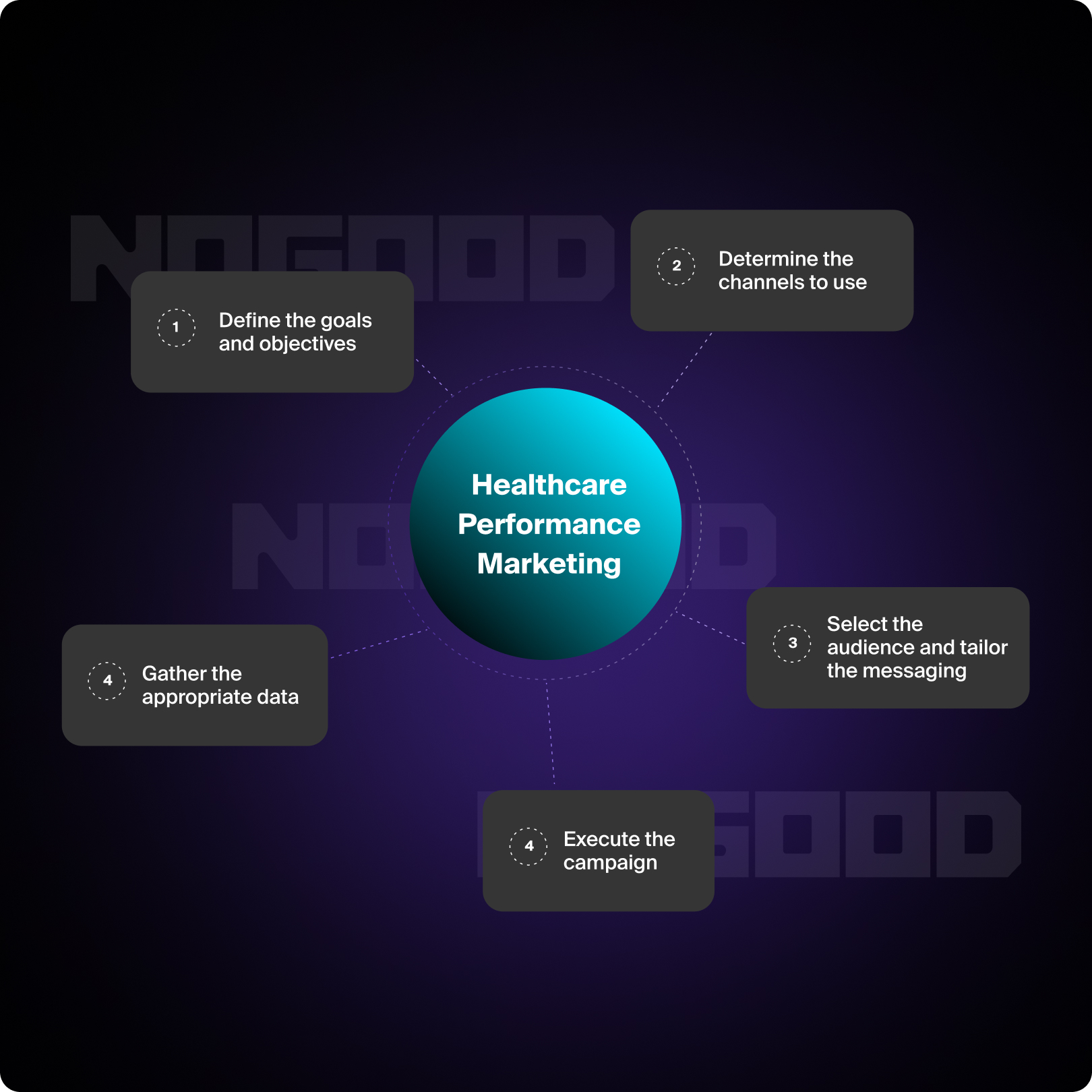
Performance marketing is exactly what it sounds like. Marketing based on performance. Unlike traditional marketing, marketers only pay when there is a specific desired action performed by their customers. That action can take the form of a click, a lead, or an impression. This method aligns costs with results, making it a highly effective marketing strategy. Some of the marketing types that are considered performance marketing and you probably already include in your marketing strategy include Search Engine Optimization (SEO) marketing, influencer marketing, email marketing, and search marketing.
Customers today, as in every other industry, are looking for a highly customizable experience. Performance marketing, with the help of data analytics, artificial intelligence (AI), and machine learning (ML), enables precise and personalized marketing activities without sacrificing personal data sharing, allowing even companies in healthcare to take a handle on performance marketing and be able to reach the right customers. With precision in messaging and targeting, not only companies can improve campaign performance but also maximize Return on Investment (ROI), which is something that they couldn’t do as easily in the past.
Key Benefits of Performance Marketing in Healthcare
Performance marketing has many benefits and that’s why brands are increasingly using it over other methods of marketing. Some of those for healthcare marketing include:
1. Cost efficiency: Companies only pay for specific actions performed by customers such as clicks, a new acquisition of a customer, a sale, etc. This ensures that marketing budgets are used effectively and efficiently.
2. Precision targeting: Through data analytics, AI, and ML, marketers can identify and target specific audiences. This ensures that the right messaging strategy reaches the right audience at the right time, improving engagement and results.
3. Compliance with HIPAA regulations: Through server-side tracking, marketers can continue to use their marketing and analytics tools without sacrificing any Personal Identifiable Information (PII). Before forwarding the data to third-party platforms such as Meta Ads, and Google Analytics, businesses can de-identify the data i.e. remove any identifying information, to protect their users’ privacy and stay compliant with the regulation.
4. Measurable results: Every single action in performance marketing can be tracked and measured in real-time, enabling continuous optimization of marketing strategies while maximizing results.
Planning with the SMART Methodology
One of the most effective methods in goal planning is using the SMART methodology. SMART stands for specific, measurable, attainable, relevant, and time-related. Here’s how to deploy the SMART framework to assess the most effective course of action:
Specific
A specific goal focuses on a precise target. This might mean defining objectives that target specific audience segments. For example, instead of setting a general goal of “increasing brand awareness,” a more specific goal would be “increasing brand awareness among cardiologists in the Northeast region by 20% in the next six months.” This clarity ensures that all efforts are pointed towards a distinct and measurable goal.
Measurable
Measurable goals allow us to track progress and determine the effectiveness of the marketing strategies. This could be something like “increasing patient portal engagement rates from 10% to 20% over the next quarter.” By establishing clear metrics, such as engagement rates, patient acquisition numbers, or the number of newsletter subscriptions, companies can continuously assess and adjust their strategies based on real-time data.
Attainable
Set yourself realistic, achievable goals. Don’t set yourself up to fail. Ask: Can we achieve this goal? Is this goal too far-reaching? Who will implement the marketing plan? For example, a goal could be, “Partner with three leading healthcare providers in the next year,” rather than aiming for an unrealistically high number of partnerships. Achievable goals take into account the available budget, manpower, and market conditions and ensure that the goals set are achievable.
Relevant
Is your goal worth the investment of time, energy, and resources? Ask: Is this the best time for this campaign and the goals we’ve set? Does this objective coincide with other goals set by the practice or hospital? For instance, if a hospital’s primary goal is to expand its telehealth services, a relevant marketing goal would be “increasing telehealth appointment bookings by 30% within the next six months.” This ensures that marketing efforts are directly contributing to the organization’s strategic priorities, whether that’s expanding services, improving patient care, or enhancing operational activity.
Time-Related
Timely goals have a specific timeline creating a sense of urgency and organization to achieve the set goals. It is important to understand a prior when the marketing effort will start and end. When will you begin this project? When will the check-ins happen? Ensuring a specific timeline, teams can ensure that the project stays on track and timelines are met.
Segmentation, Targeting, and Positioning (STP) Model
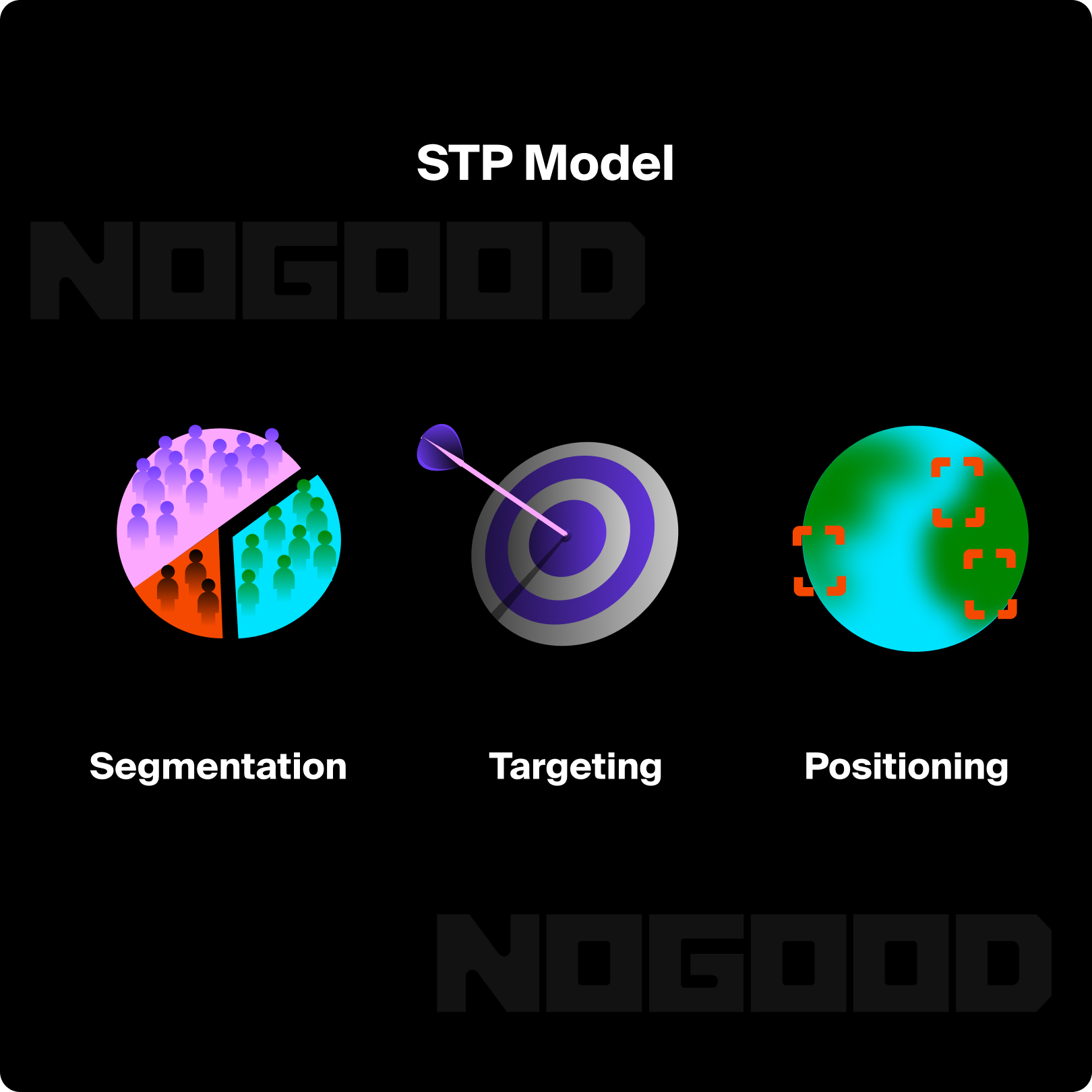
The STP model plays a crucial role in crafting effective marketing strategies. By utilizing advanced technologies, companies can have an advanced understanding of their audiences, target them precisely, and position their services and products to meet the audience’s needs.
Segmentation
- Utilizing big data for in-depth audience analysis: Healthcare companies can leverage data from Electronic Health Records (EHRs), patient surveys, and wearable health devices to gain insights into patient demographics, behaviors, and health conditions. By using this data, healthcare marketers can build awareness with brand messaging, deliver therapeutic messaging, distribute co-pay support, and enroll patients into patient engagement programs to improve health outcomes.
- Developing advanced patient personas: Combining demographic, psychographic, and behavioral data helps create detailed patient personas. These personas represent distinct segments within the patient population, such as “tech-savvy millennials who prefer telehealth services”. Tailoring marketing messages to these personas enhances engagement and satisfaction.
- Creating dynamic customer journey maps: Customer journey maps help visualize interactions and identify pain points. This helps stakeholders assess the customer experience from multiple perspectives. Journey maps provide a way to visualize the internal and external factors affecting customer flow and the different paths customers must take to reach their goals.
Targeting and Positioning
- Precision targeting with AI and ML: AI and ML can analyze patient data to predict health needs and behaviors, allowing for highly targeted marketing efforts. For example, AI can identify patients at risk of certain conditions, enabling the advertising of targeted preventive care programs.
- Strategic positioning of healthcare services: Positioning involves creating a distinct image and value proposition. Companies can differentiate themselves by emphasizing quality of care, patient-centric approaches, and innovative treatments. As an example, a pediatric clinic might position itself as a family-friendly provider with experienced pediatricians.
Leveraging the Most Common Performance Marketing Channels
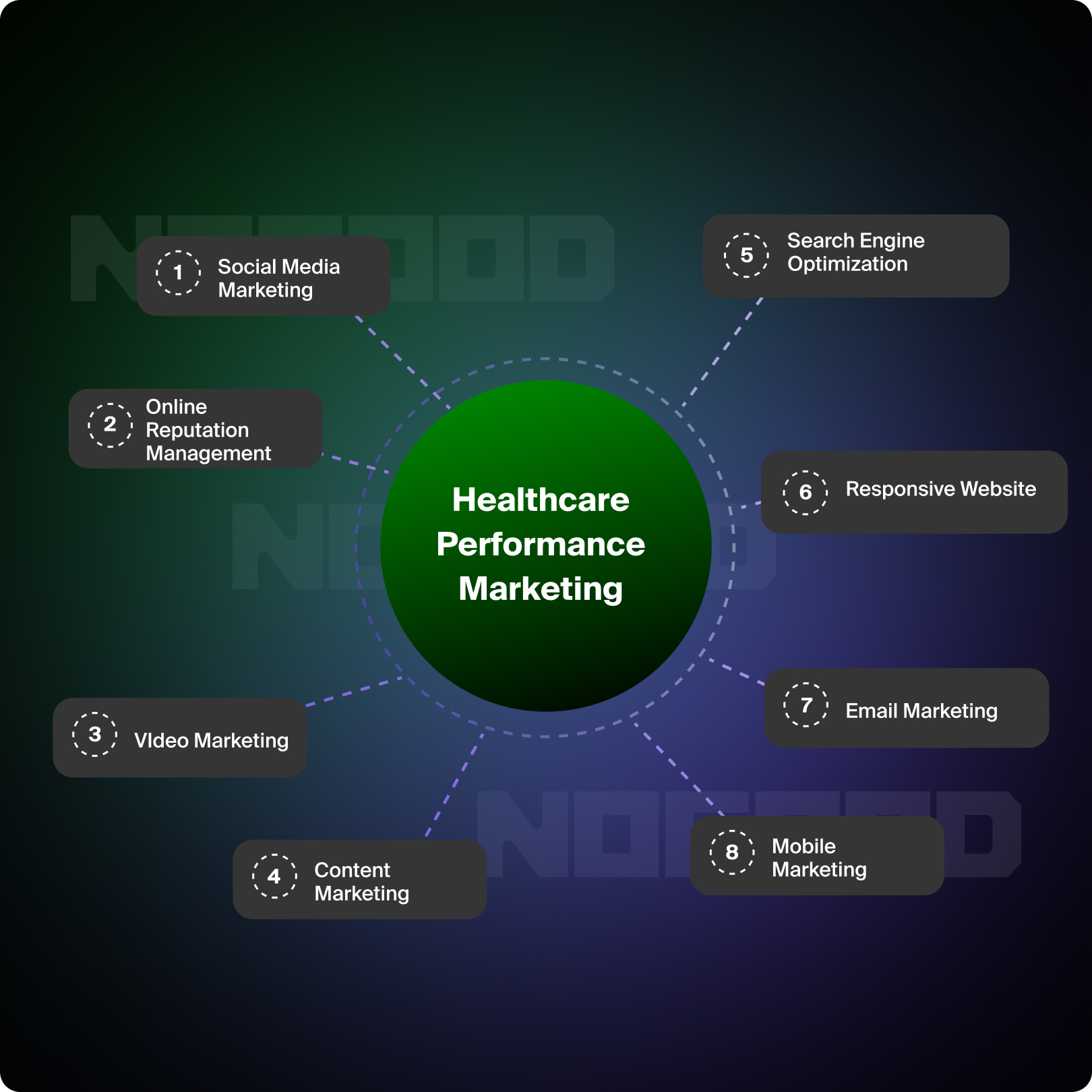
Search Engine Marketing (SEM)
SEM is one of the most important channels for healthcare marketing. It combines SEO and paid campaigns to generate the designed action and build credibility for your business. Another added benefit is that through SEM marketing, you always make sure that you come up first when users are searching for a keyword that is relevant to your business. As an example, a medical equipment company for orthopedics, wouldn’t want to show up at the bottom of the page or not show up at all when doctors or hospital administrations are looking for a new supplier. Typical pricing models for SEM include Cost-per-Click (CPC), Cost-per-Impression (CPM), or Cost-per-Acquisition (CPA). Common goals for a healthcare organization
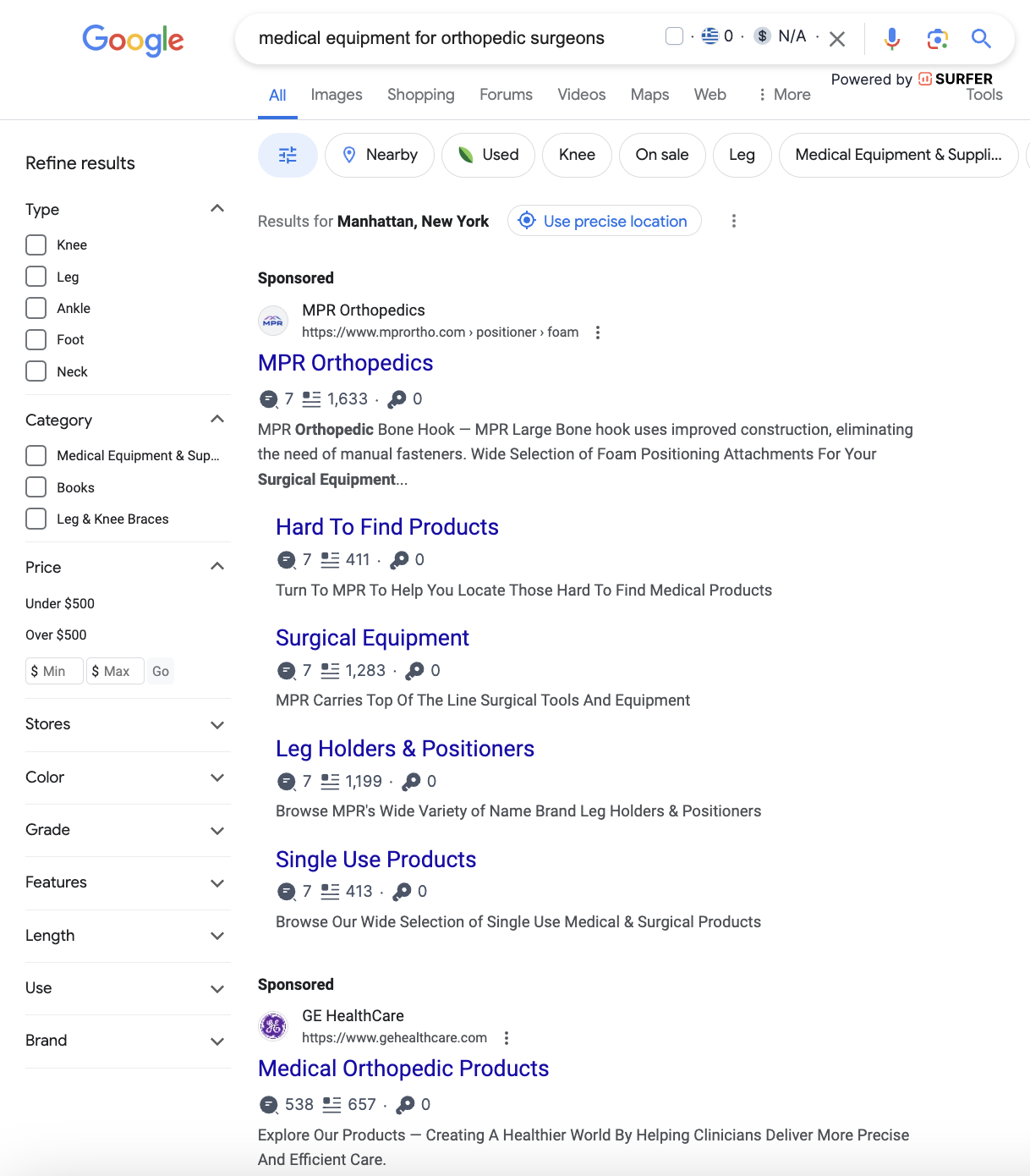
Social Media Marketing
Social media has become the new word-of-mouth marketing channel, establishing itself as an indispensable tool for healthcare organizations. By using social media, brands can build trust and enhance their presence with their target audience. With billions of daily active users on platforms such as Meta, X, LinkedIn, TikTok, or Reddit, companies can use these channels as tools to scale their reach and generate brand awareness. Some of the techniques that are usual for social media marketing include:
- Sharing preventative health news: Companies can share time-sensitive posts to engage their audience and educate them. This type of content can include articles on recent health epidemics, routine procedures, and hot topics in the industry. When you create a habit of sharing such type of content, users look at you as their source of the latest news in the healthcare sector, making them more likely to engage with your posts.
- Raising awareness for events, new research, and more: It’s important to keep a balance between promoting certain events around your brand while also demonstrating the passion that the team has in everything that they do. When customers see that, it helps them build a stronger bond with your business.
- Testing Lookalike (LAL) audiences campaigns: LAL audiences are an effective way to reach potential clients or partners who share characteristics with your existing audience. By analyzing data from your current followers or your social media platforms, you can identify and target users with similar demographics, interests, and behaviors.
- Launching retargeting campaigns: Retargeting is essential for keeping your brand top-of-mind among individuals or organizations who have previously interacted with your online content but haven’t converted yet. By placing a tracking pixel on your site, you can serve ads to users as they browse other sites or social media. However, it’s crucial to comply with HIPAA regulations when retargeting. HIPAA mandates the protection of Protected Health Information (PHI). This means that any retargeting efforts must ensure that PHI is not improperly shared with third parties. Typical pricing models for social media include CPC, CPM, Cost-per-View (CPM), or CPA.
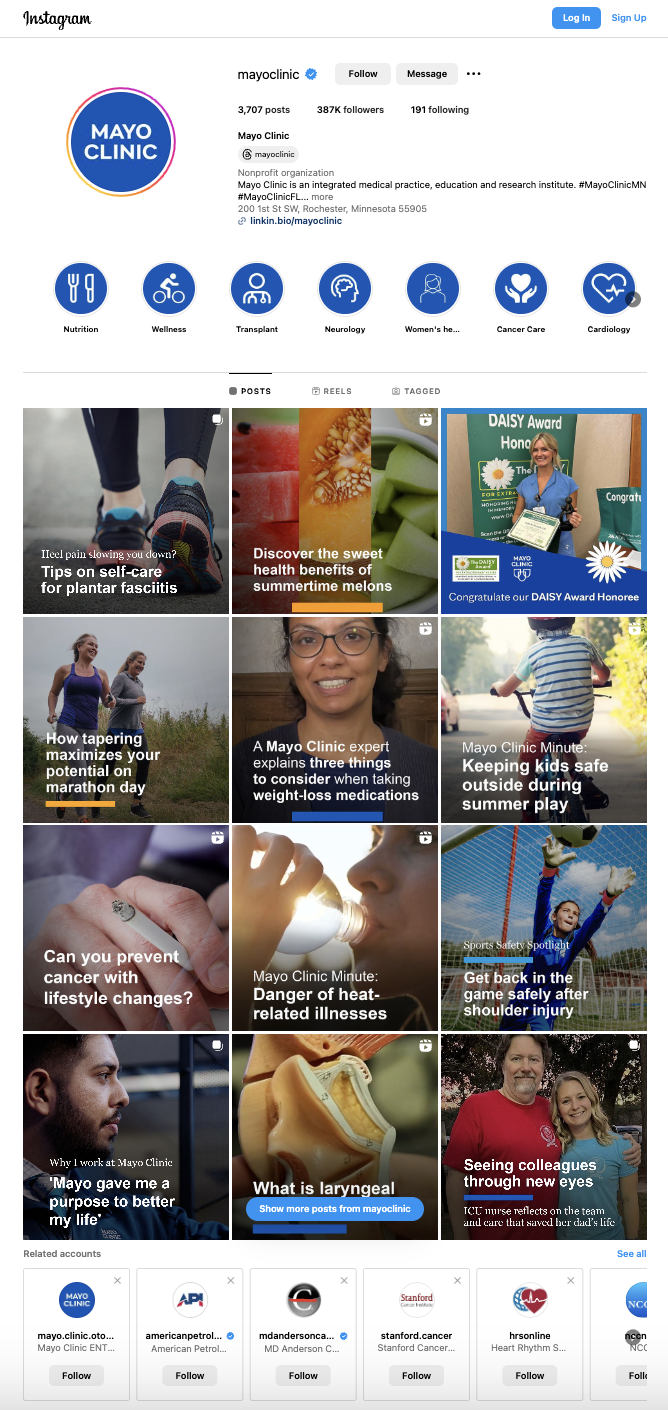
Content Marketing
Content marketing is a common technique for healthcare organizations such as hospitals and healthcare providers. It uses quantifiable metrics to measure the direct business results of content, such as revenue, online conversion, and ROI. These metrics can help marketers compare their content to competitors, justify continued investment, and optimize content performance. Common pricing models in content marketing include Pay-per-Engagement (PPE), Cost-per-Thousand (CPM), or CPA. Among the many benefits, it’s a leading technique for customer engagement, retention, branding, and professional reputation building. Successful content marketing techniques include:
- Content clustering: Content clustering includes a main piece of content (a pillar page) on a broad topic, supplemented by related articles and resources. This method helps organize content around a central topic as well as helps with improving SEO by linking related pieces together. For healthcare, a main pillar page can be a topic around “Telehealth Services”. Supporting topics can include “Benefits of Telehealth, “How to Choose a Telehealth Provider,”, “Telehealth Best Practices” or “Telehealth for Chronic Disease Management”. These pages then need to be detailed and informative, providing a thorough overview of the main topic.t” can cover various chronic conditions, management strategies, and patient resources, linking to more detailed articles on each condition.

- AR/VR content: Augmented Reality (AR) and Virtual Reality (VR) are innovative technologies that are helping healthcare organizations advance their content strategy. AR can enhance the real-world environment by superimposing digital objects into it. It can be used to create educational experiences for medical students, demonstrate medical procedures, or visualize the human anatomy. VR offers complete immersion in a virtual environment, such as showing a patient who needs brain surgery what they are going to undergo, or taking a virtual trip inside their brain. According to a report by Goldman Sachs’ Global Investment Research, the global AR and VR in the healthcare market is expected to reach USD 5.1 billion by 2025.
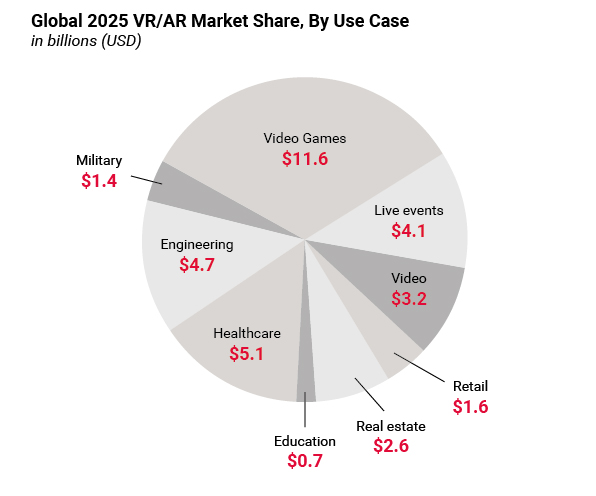
Programmatic Advertising
Programmatic ad platforms provide a broad range of features across the entire publishing and buying workflow, enabling ad buyers and sellers a one-stop shop for everything from purchasing to bidding, and analysis. These ads then appear on third-party websites and use video, image, or text to market the products or services of the organization. Precise targeting is what sets display ads apart from other performance marketing efforts, specifically for healthcare. By working with compliant data partners, healthcare organizations can use EHR data to create targeted campaigns without sacrificing data privacy regulations. Some of them are strong in display ads marketing and can use detailed data for healthcare customers including Pulsepoint, LiveRamp, Veeva, Healthgrades, and others.

Enhancing Web Performance and Conversion Rates
Conversion Rate (CVR) is a central KPI in performance marketing. It is the percentage of users who perform the desired actions on your website or landing pages, such as making a purchase or signing up. The conversion rate is a direct measure of the success of your marketing strategy and efforts. Improving CVR on the website is important for all businesses wanting to provide a seamless UX/UI experience. Here are some best CRO tips for healthcare brands:
Focus on User-Centric Design (UCD)
This is an iterative design process where your pages would need to focus on the users and their needs in each phase of the customer journey. Are your efforts targeted at creating brand awareness? Link pages that would allow users to find more within your site about the brand. Are users already familiar with your brand and you’re just trying to make them convert through paid acquisition campaigns? Create pages following the AIDA framework, that would make it easier for them to convert.
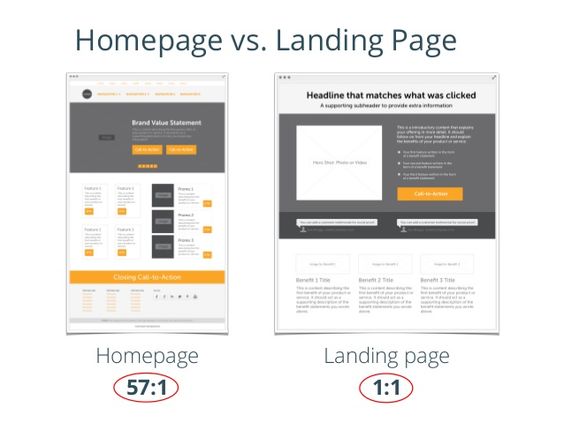
Use heatmaps and session recordings for user behavior analysis
Use heatmaps to visualize user engagement and session recordings to capture individual interactions and assess performance. Analyzing this data helps to identify pain points and optimize the site layout and content to improve user experience. Are users interested more in nerve block-related content than hip injuries? Your analysis will show, that you may want to move the nerve block content higher than the hip injury content.

Test advanced CRO techniques
Multivariate A/B testing can be used to determine the most effective page elements. Dynamic content personalization can tailor the user experience based on behavior and preferences, enhancing engagement and conversions.
Integrate additional tools to improve engagement
Chatbots for instant assistance, virtual assistants for complex interactions, and appointment scheduling systems can be added as additional widgets on the site to streamline the user experience. PolyAI is such an example, where healthcare companies can use it to take appointments, answer FAQs, reduce missed appointments and route phone calls with no staff needed.
Comprehensive Data Analytics and Performance Measurement
Data analytics, accurate event tracking, and attribution are not negotiable for healthcare companies that choose to do performance marketing. By leveraging advanced analytics, companies can measure and optimize their efforts. Performance measurement is important as it provides vital insights to inform future marketing strategies. If tracking is not set up right across all platforms or attribution isn’t set up right based on your marketing objectives, then marketers can make wrong decisions when deciding on the next steps for the strategy. Here’s how analytics can be leveraged to drive up the performance of your marketing campaigns:
Identify the right metrics
The first thing in leveraging analytics for performance marketing is to identify the right metrics you want to use to optimize your campaigns based of. KPIs can include click-through rates, conversion rates, customer acquisition costs, lifetime value, retention rate, and others. The goal as mentioned above should be set a priori.
Understand and segment your customers
Organizations can leverage customer behavioral insights to improve their marketing efforts. Marketers can analyze data from multiple sources to make sure that they identify trends and preferences to understand the customers better. Cohort analysis can also be used to segment the audience into groups based on shared characteristics such as treatment plans or health conditions, providing deeper insights.
Monitor performance metrics
Monitoring KPIs to track the progress towards achieving the goals is important. If there is only one website, companies must set up a Google Analytics 4 (GA4) account. If it’s a digital product (either a web or mobile app), companies need to set up product analytics tools like Mixpanel to analyze performance. Everyone needs to be able to visualize all of their marketing data in one place to get a holistic view of their data. These tools include Looker Studio, Power BI, Tableau, Databox, etc. The choice of tool depends on the technical experience of the various team members.
Optimize marketing strategies with A/B and multivariate testing
A/B and multivariate testing allow healthcare companies to experiment with different marketing elements, determining the most effective combinations to increase CVR.
Perform incrementality tests and brand lift studies
Incrementality tests determine the actual impact of marketing measures, while brand lift studies measure changes in brand perception and awareness. Both evaluate the effectiveness of campaigns in compliance with HIPAA privacy standards and improve overall brand reputation. The geographic split test is the most popular incrementality test because it splits the target market into different regions, exposing some regions to the marketing campaign and not others. This framework helps to control external factors and provides a clear picture of the impact of the campaign.
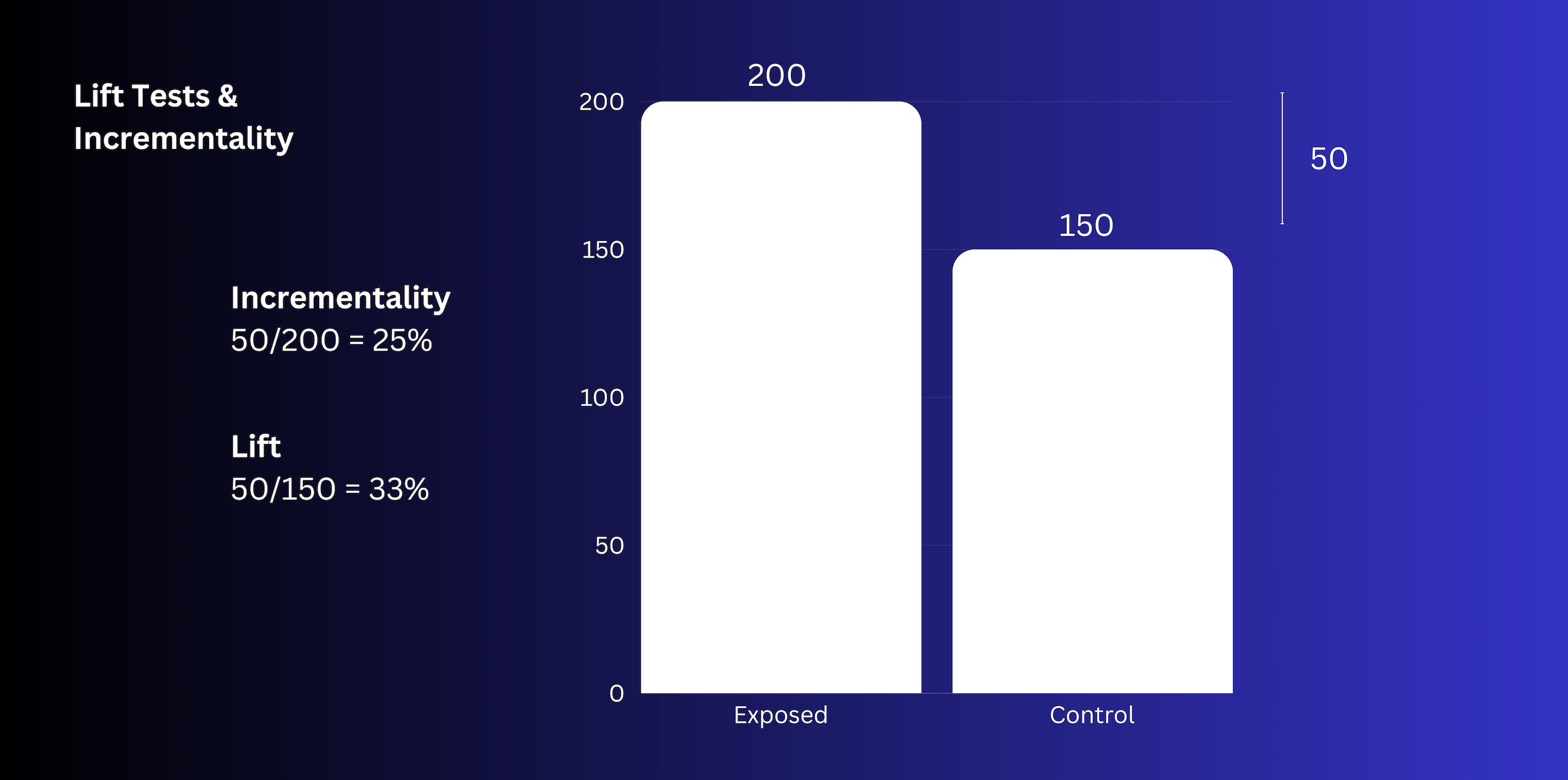
Navigating Regulations and Ensuring Data Privacy in Healthcare
Compliance for healthcare organizations involves implementing comprehensive data protection policies, conducting regular risk assessments, and ensuring that all data processing activities meet legal requirements. There are still ways to perform performance marketing and still abide by HIPAA regulations.
- Data anonymization and encryption: By removing Personally identifiable information (PII) and using encrypted data sets, healthcare organizations can analyze and target audiences without violating privacy regulations. For instance, marketing campaigns can be based on anonymized health data trends, without sacrificing individual patient identities.
- Strict access controls: By working with HIPAA-compliant third-party vendors, healthcare companies can ensure that all aspects of their performance marketing are secure and compliant.
- Regular security audits: Obtaining explicit patient consent for data use is essential to inform patients about how their data is handled and provide options to opt in or out.
The healthcare industry is progressive in many ways, but marketing strategies often lag behind other consumer-oriented industries. Due to closely guarded privacy regulations and constrained marketing efforts, it’s challenging for healthcare organizations to keep up with marketing innovations as other industries do. Performance marketing is an avenue for precise targeting that can significantly improve customer retention and loyalty. With specific and measurable goals, performance marketing can prove the performance of campaigns and demonstrate increased ROI for organizations. As marketing continues to evolve, the healthcare marketing industry will undoubtedly adapt, embracing new technologies and methodologies to better serve customers, patients, and other stakeholders.




